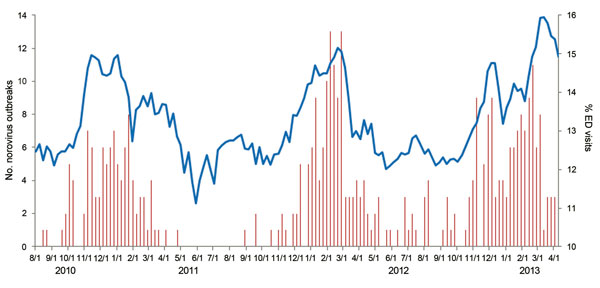Volume 19, Number 8—August 2013
CME ACTIVITY - Research
Effects and Clinical Significance of GII.4 Sydney Norovirus, United States, 2012–2013
Figure 3

Figure 3. . . . . Percentage of emergency department and urgent care (ED) visits for gastrointestinal illness as reported through the Ohio EpiCenter syndromic surveillance system and number of suspected and confirmed norovirus gastroenteritis outbreaks by week, August 1, 2010–April 16, 2013.
Page created: July 23, 2013
Page updated: July 23, 2013
Page reviewed: July 23, 2013
The conclusions, findings, and opinions expressed by authors contributing to this journal do not necessarily reflect the official position of the U.S. Department of Health and Human Services, the Public Health Service, the Centers for Disease Control and Prevention, or the authors' affiliated institutions. Use of trade names is for identification only and does not imply endorsement by any of the groups named above.